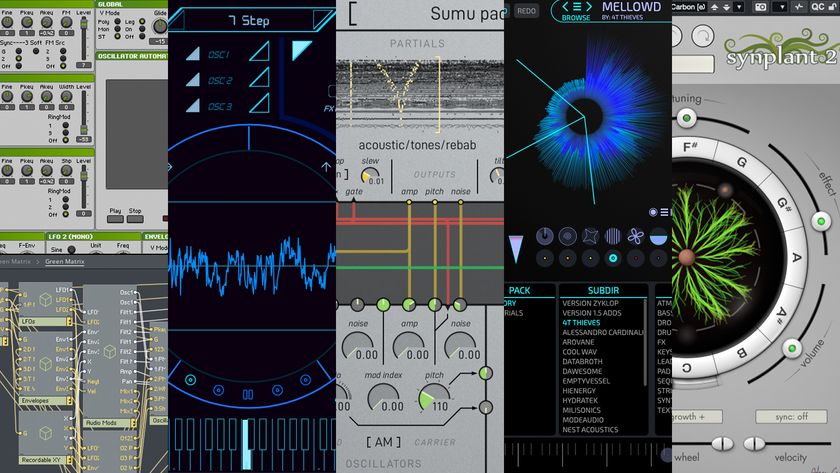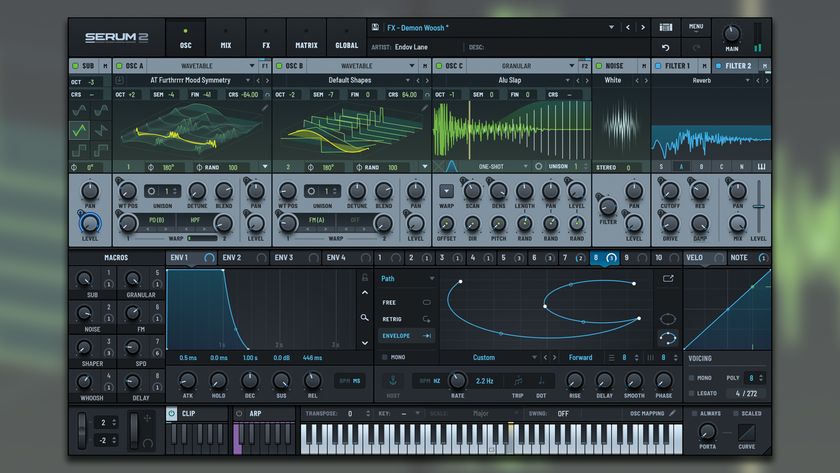New hardware synths for 2022: Casio, Roland, Behringer and more incoming
Gear Expo 2022: Get set for the very latest hot and heavy synthesizer hardware
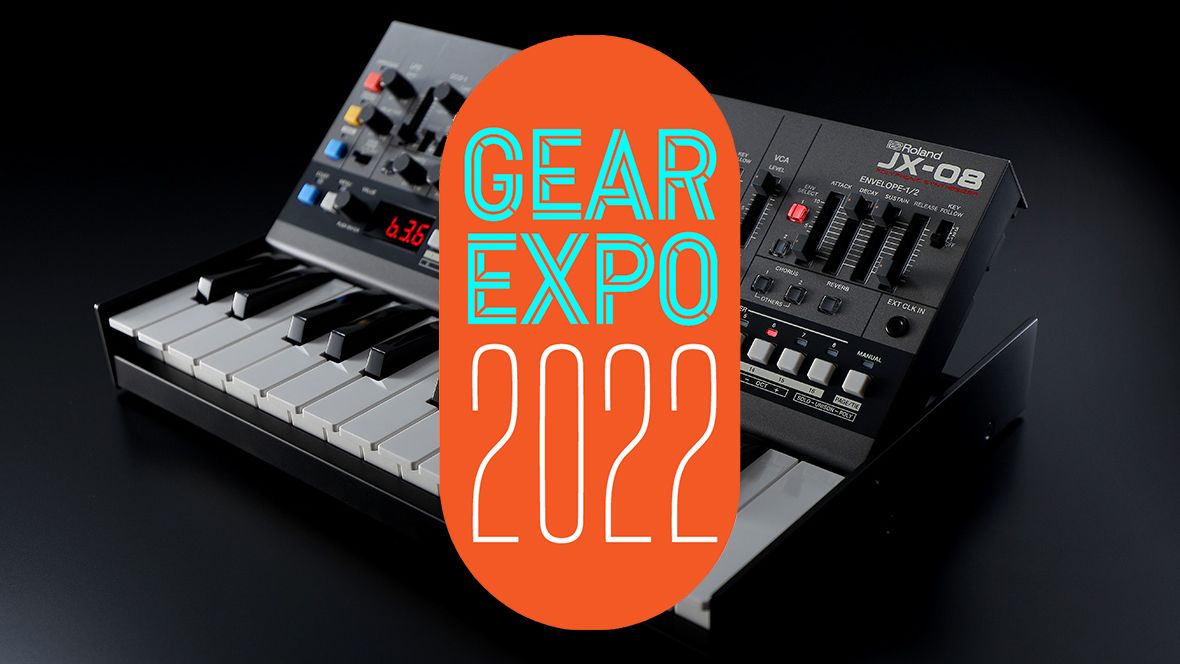
GEAR EXPO 2022: It's all very well gently mousing parameters back and forth in your DAW, but when music-making starts to feel more like air traffic control, it might be time to get up close and personal with something a bit more 'real'.
A hardware workhorse synth can be the centrepiece of your studio or the aural icing on your DAW cake, and 2022 looks all set to satisfy with innovation coming in brand new flavours and - of course - some welcome reimaginings of classic gear from time and tracks gone by.
Here's our pick of the synth big guns for 2022.
1. Casio Casiotone CT-S1000V
Okay. So the name doesn’t exactly trip off the tongue. And Casio’s history with hardware synths isn’t up there with many of its similarly Japanese contemporaries, but we’ve always had a soft spot for the big C since it spanked Yamaha at its own game with a never-ending line up of affordable MT home keyboards in the early '80s, all kicked off with its game-changing Casio VL-Tone/VL-1. Legend…
Casio's last synthy rebirth took place almost 10 years ago with its WX-P1 and XW-G1, which were given far too short a shrift. But the brand has been enjoying recent renaissance thanks to its excellent home keyboards and digital pianos. And - never ones to do the obvious - its latest 'synth' is once again striding into new territory.
For while the CT-S1000V uses the AiX Sound Source engine that Casio currently uses in its ongoing CT-X keyboards, it's an all-new 'vocal synth' that can turn text into vocals. Yes, if you type it ,the CT-S1000V will sing it.
Using the Lyric Creator app to input your lyrics, you tell it each syllable's timing and can then play the results polyphonically across the keyboard, creating your own harmonies. There are 22 different vocalists to choose from and you can then tweak them with hardware controls. You can even deep edit each voice, even changing the 'age' of the singer…
Get the MusicRadar Newsletter
Want all the hottest music and gear news, reviews, deals, features and more, direct to your inbox? Sign up here.
It's all rather groundbreaking, and a significant step beyond your standard ‘robot voice’ vocoder.



Of course, there are presets for classic vocoder and talkbox sounds - great for robo-tracks - but there's also more 'realistic' ammo, including choirs, vocal groups and solo singers
The CT-S1000V is also a fully-featured ‘standard’ home keyboard, offering 800 AiX-powered sounds and 64 voices of polyphony. On top of this you get 243 built-in rhythms, 150 arpeggiator patterns, effects, a metronome, a built-in recorder and even basic sampling functionality.
If you just want the Casio keyboard components, go for the cheaper CT-S500, which is the same but without the vocal trickery.
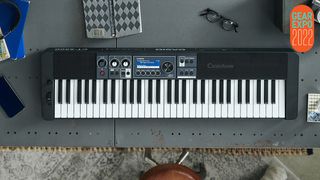
It all has to be heard to be understood, so do check out the video above and read our full review here.
2. Roland JX-08
Back in 2016, Roland finally sort of did what musicians had been begging it to do and remade and re-released hardware versions of some of its old classic synths.
Its Boutique range chops off the keys of the originals, minimises and digitises the synthesis (no analogue vagaries here, unfortunately) and cuts the price tag considerably.
One such legend that got a revamp was its JX-3P which appeared in Boutique form as the JX-03. Now six years later, it's finally got round to its ‘big brother’, the JX-8P.
The 8P was the end of an era in many ways, featuring analogue synthesis with digital control. If offered the best of both worlds, but soon after - in the name of progress - everything went 100% digital.
The 8P sound is therefore super-fat, complex, controllable and capable of a much wider range of tones than its little brother. However, its Yamaha DX7-style flat panel (as was the trend at the time) actually featured even fewer tweakable controls than the 3P, making its optional PG-800 slider control deck a bit of a must-have.







Which makes the JX-08 remake all the more welcome. Here’s a mini JX-8P, remodelled with the integrity of their Analogue Circuit Behaviour tech, with at least some of the sliders from the PG-800 in one portable, USB-C-able box. It can even get power over USB-C, meaning that one cable is all you need to get audio and MIDI into your DAW.
Plus, THIS JX is two-part multitimbral and comes with 17 new effects, including the legendary chorus from the Juno-106. You also get the portable battery power and built-in speaker the Boutique series is famous for.
Of course, it also works with the Boutique series' K-25M keyboard (see pics) and is expected to retail at £349. More details at Roland.
3. Roland JD-08
The Boutique series began as a way to relaunch Roland’s classic analogues, but - with the advent of the D-05 – a note-perfect remake of its all-digital, smash-hit late-eighties D50 - it showed that the format works for its classics of all ages.
So, step up the JD-08, a remake of the dance/trance detonating JD-800. The JD-800 was a monster digital synth that mercifully restored full slider controls to its surface, making it at least appear like an old-school classic when its innards were 100% ones and noughts. In time, however, it’s earned its place in history, being a star performer on many '90s rave classics.





The 64 presets - featuring famously super-phat basses, extra-warm pads and crystalline digital chimes - have been bolstered by a further 24 new gems, and memory locations now offer 256 places to store your own future classics.
Plus - like the JX-08 - the unit is now two-part multitimbral. Likewise, all you need is one cable for power, MIDI and audio to your DAW and - like the JX-08 - there’s even the option for battery powering, plus a built-in mini speaker for quick and easy use out of the box.
The control surface goes some way to replicating the slider-packed deck of the original but - as per all the Boutiques - you'll need deft, slim fingers to make minor adjustments here.
See more at Roland.
4. Erica Synths mki x es.edu DIY synth kits
OK. This one takes a little thought to get your head around and certainly isn’t for everyone.
Rather than simply buying a new synth and enjoying the same presets and setup as everyone else, how about buying into a series of synth component kits that you have to put together yourself, which go together to form a unique analogue synth?
Scared of soldering? Don’t panic. The kits have been designed for newcomers to get to grips with (extensive instructions provided) so anyone keen to dip their toes in the basics and get really up close with what makes a synth tick can get involved.
Collectively known as mki x es.edu, the kits are a collaboration between popular electronics innovator Moritz Klein and Erica Synths, the maker of much-loved modules. There will be nine kits in total, released every four to six weeks, with the complete set building a fully-featured monosynth.
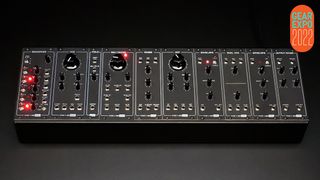
The idea is that not only will you learn about every element of the synthesizer in the process of building one, but will also grow closer to and have more fun with the finished product than any off-the-shelf equivalent. (The edu is for education…) So, if you’ve ever wanted to really master a synth from the ground up, this is your chance.
The mki x es.edu VCO component is available now for €60, with further modules including a dual VCA, a VCF, a noise/S&H module, a wavefolder, an envelope generator, an output stereo mixer with a headphone amplifier and even a sequencer. Plus, you’ll be able to buy a Eurorack case to house everything in, along with a DIY PSU. What could be simpler?
Find our more at Erica Synths.
5. Behringer Pro-800
It's been a long time coming, but will 2022 finally see the arrival of Behringer's Pro-800 – its reboot of Sequential Circuits’ Prophet-600 synth?
The Pro-800 has eight voices compared to the six on the Prophet-600, and comes as a Eurorack-friendly module rather than a keyboard. It’s been created with the help of synth designer GliGli, who specialises in modding and improving the Prophet-600.
Hopefully, the Pro-800 will land within the next few months priced at $599.
And while we're here: Hey, Behringer, how about you don't leave us hanging for the MS-5, Wave, Quadra, Edge, Jupiter-8, Syncussion, Polyeight, VCS3, Polivoks and MonoPoly, too?
6. Roland n/zyme Model Expansion
Another enhancement for Roland's flagship Fantom range of workstations lands in the form of a new wavetable synth.
Operating almost in its own rarified world, the Fantoms just keep getting better and better thanks to Roland perpetually finding new ways to use its Zen-Core sound design tech.
Fantom owners have already enjoyed on-board recreations of the JX-8P, SH-101, Juno-106, and Jupiter-8 synths (available for the stunning price of 'free') but now comes a new Model Expansion that's 100% original.
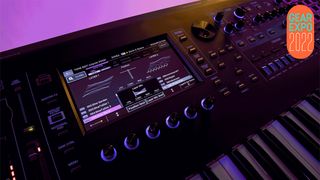
n/zyme combines wavetable oscillator layers, phase and shape modulation, resonant filters and two step LFOs, all rendered easy to program by the Fantom’s touchscreen and physical controls.
You can jump or morph between waveforms - creating dramatic tonal shifts or evolving soundscapes in the process - and you have the facility to mix two layers with 63 wavetables each and adjust their positions in real-time. As such, n/zyme should be capable of conjuring up some pretty complex sounds.
Sounds can be shaped by drawing custom waveforms on the touchscreen, and these can then be tweaked using the modulation tools. There’s also an X/Y pad on the touchscreen, along with automation support and tempo-synced control over speed, intensity, and more.
As for the two LFOs, these offer 16 tempo-synced steps and 37 shapes per step, while the Step Kick Switch can be used to add some percussive attack. There are eight filter types, including several vintage analogue designs, and you can also mix n/zyme’s sounds with others on your Fantom.
You can purchase n/zyme as a Lifetime Key for a one-off $149. It’s compatible with the Fantom 6, 7 and 8, though you’ll need to update to version 3.0 - for free - before you install it.
Find out more on the Roland website.
7. Arturia 'Noir' Editions
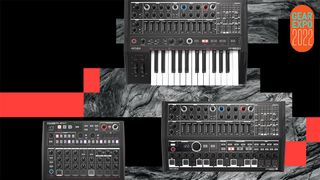
Arturia has revealed new ‘Noir’ editions of its MiniBrute 2 and 2S synths and the DrumBrute Impact drum machine, giving potential purchasers a stealthier colour option for a limited time.
Whereas the standard versions of the instruments have splashes of colour, the special-edition models sport completely black exteriors, making them particularly suitable for emo kids and Bruce Wayne.
Internally, these analogue beasties are the same as the regular Brutes; check out the video below to discover the differences between the MiniBrute 2 and 2S.
You can find out more about the Brute Noir editions on the Arturia website.
8. Akai Professional MPK Mini Play mk3
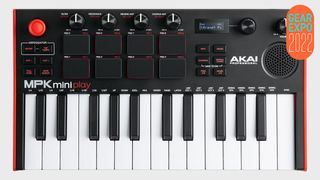
Not only a super-compact MIDI keyboard controller (though it most certainly can be that), Akai Professional’s MPK Mini Play mk3 is also a portable keyboard that contains 128 built-in sounds.
These cover acoustic/electric pianos, synths, pads, drum kits and more, and the fact that there’s a built-in speaker - a better, more powerful one than was in the original MPK Mini Play - means you can jam away without any other hardware. There’s also a 1/8-inch headphone jack so you can shut the world out when you need to.
Portability is further aided by a battery power option, which promises more than 14 hours of runtime. You can also power the keyboard via USB.
The 25-note keyboard is said to be more playable than before, with improved velocity response. With just two octaves to work with, though, there’s not going to be a great deal of scope for giving two-handed performances.
The eight velocity-sensitve drum pads, meanwhile, are now officially ‘MPC-style’ ones, while the four parameter control knobs have been moved above them. There’s an onboard arpeggiator, too.
We’re still awaiting full spec and pricing details for the MPK Mini Play mk3 - and it hasn’t yet appeared on the Akai Pro website - but the word is that it’ll be launched in the US in March.
9. Roland Aerophone AE-20 digital wind instrument
Given that it could be considered to be a relatively niche product, there have been a surprising number of Roland Aerophones - digital wind instruments that are designed to enable players of acoustic ones to access a multitude of different sounds.
The latest is the Aerophone AE-20, which promises the same level of playability and expression as the flagship Aerophone Pro but in a more compact and streamlined package.
The sound palette kicks off with the expected acoustic wind tones (saxes, clarinet, flute, trumpet and more) and moves on to cover strings and world instruments. These sounds are generated using Roland’s SuperNATURAL technology, which promises to recreate every playing nuance.
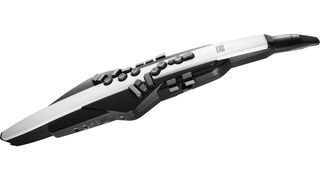
Electronic tones are powered by Roland’s Zen-Core synthesis system, which can generate everything from analogue synth emulations to contemporary digital voices. This curated selection of presets has been chosen to take advantage of the unique articulations and extended dynamic range that a wind instrument offers.
In fact, the AE-20 is designed to feel totally familiar to wind instrument players, offering a reed-style mouthpiece, fast response and intuitive pitch and vibrato control. You can customise the breath/bite sensors and the fingering, and there’s instant transposition and a five-octave range.
Connectivity includes headphones and line outputs, and USB-MIDI for connecting to your computer or mobile device. There’s also Bluetooth MIDI/audio, enabling wireless playing. Sounds and settings can be tweaked with the Aerophone Pro Editor.
The Aerophone AE-20 will ship in March priced at $1,000. Find out more on the Roland website.
10. Waldorf M
Waldorf is playing on its wavetable history with M, a new desktop synth that recalls its Microwave and Microwave II instruments, but offers plenty of new features, too.
M is a hybrid eight-voice, four-part multitimbral synth with two wavetable oscillators. These can be switched between Microwave and Microwave II modes, behaving differently in each.
This synthesis engine is complemented by an analogue low-pass 24dB/Oct VCF (Voltage Controlled Filter), complete with resonance and analogue saturation feature, and a true stereo analogue VCA (Voltage Controlled Amplifier) with panning option. As such, M has hybrid digital/analogue synth status.



There are 96 factory wavetables and the option to import your own, while hands-on control comes courtesy of 45 knobs and a selection of buttons, all nicely-spaced across the all-metal housing.
Other features include two LFOs, an arpeggiator, and four programmable envelopes. On the connectivity front, meanwhile, you get six stereo analogue outputs, a stereo headphone output, MIDI In/Out/Thru/USB, and an SD card slot.
The Waldorf M costs £1,879. Find out more on the Waldorf website.
